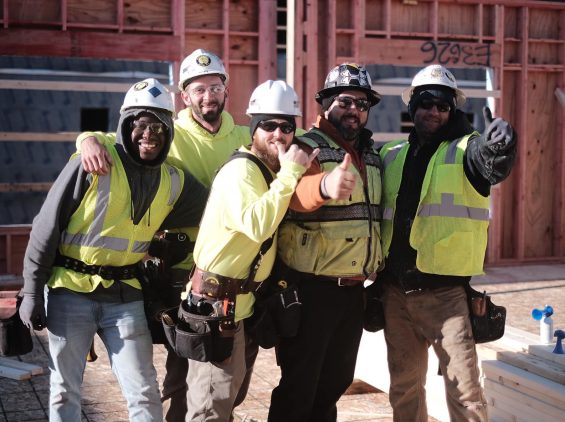A strong union needs skills, benefits and ACTION!

It’s a good time to be a UBC member. It’s also a good time to become a UBC member.
Fueled by multiple factors, work for union carpenters is holding steady in the North Atlantic States region. It’s expected to stay that way for the predictable future and grow significantly in some areas.
The forecast is the result of fruit borne by the efforts of union members and their allies in organizing, political action, training and business development and will provide room for growth in membership, our base of employer-partners, and overall work hours.
With a diversity of markets in the seven-state region, current and future conditions do vary a bit. Boston has been a construction boom area for more than a decade. Though things may not still be white-hot, they are certainly still very warm and expected remain that way. In Syracuse, an explosion of work is about to begin that will last a decade or more. Buffalo and Albany have also been busy markets that expect to get a little busier.
Assistant Executive Secretary-Treasurer Bill Banfield says a few big projects are driving some of the increases upstate, and there are generational and market forces at play, as well. He said the $120 billion Micron project just North of Syracuse, which will go for 20-years is going to spur hundreds of billions of dollars of other growth.
“We see some of the same with the new Bills stadium starting soon in Buffalo ($1.6 billion) and the Global Foundries ($15 billion) in the Eastern part of the state,” he said. “There’s also a simple factor that the industry age is older than it should be and that’s opening room for a lot of mid-career and younger people to come in.”
Infrastructure has been a major factor in maintaining optimism in the construction industry. Coming out of the COVID pandemic, inflation was rising and many were predicting a recession, and a potentially deep one. The construction industry was also sensitive to the potential impact of office vacancy rates remaining higher than normal.
A series of major federal infrastructure bills passed with bi-partisan support seemed to come at just the right time. Billions of dollars were earmarked for roads and bridges, airports, water and sewer projects that not only support overall economic activity, but spur additional “vertical” development.
Funding strategically targeted green energy projects and domestic manufacturing of computer chips and other advanced technology that was difficult to source during the pandemic.
Best of all, the bills included generous incentives when funding targets used project labor agreements, certified apprenticeship programs, prevailing wages and other methods that encourage use of union labor by establishing or maintaining industry standards. “Investing in infrastructure is good government at its finest,” said NASRCC Political Director Joe O’Brien. “It not only puts a lot of people to work in good jobs, but the money goes to people who need it and spend it. The projects themselves also benefit private businesses. They lead to private investments and job creation in the private sector beyond the construction industry. That’s why it gets more bi-partisan support than many other issues.”
Housing continues to be a need in many areas, leading to a significant and steady increase in membership for Residential Local 723. The local has been working to increase woodframe construction as well as residential concrete and drywall. Commercial construction for union members is also strong in other markets in the seven-state region.
The union continues to promote the availability of work and the viability of the career to balance the industry demand for our members. The North Atlantic States Carpenters Training Fund and the Labor Management Program have worked to increase their presence at job fairs and school visits as well as hosting students in union training centers on “Shop Fridays.”
Pre-apprenticeship and other outreach methods have enabled the union to extend its reach to underrepresented communities or community-based programs that provide career counseling or training. Examples can be seen in stories featured in this issue.
Nonunion carpenters have been taking advantage of increased demand by seeking better conditions from their employer or applying to join the union. Organizers are taking advantage of the market to “strip” targeted nonunion contractors of some of their key workers, too.
Members can play an important part in boosting membership and helping each other find work that suits them. Many members still enter the trade and the union because of a personal recommendation. Networking for employment through the union or member-to-member can be one of the most attractive things about the union. Having a cooperative regional council expands the network for members significantly.
“Whether a journey level member takes some training to move into a different kind of work or a young person relocates to an area where they can get their career off to a fast start, we expect there to be a lot options for steady, rewarding work,” said NASRCC’s Joe Byrne. “Our union has all the tools to help our members—and those looking to join our union—succeed. This is a really exciting time